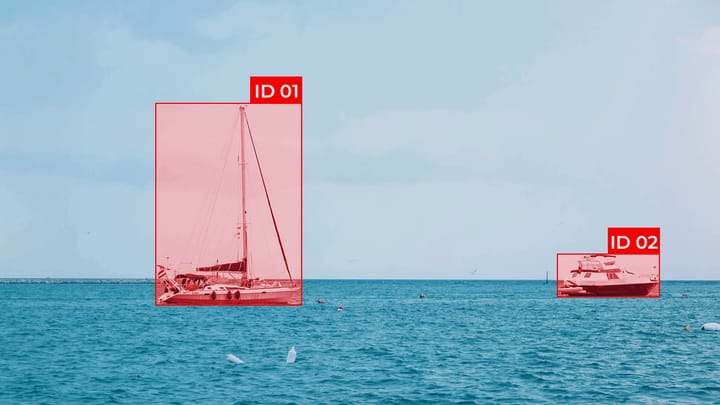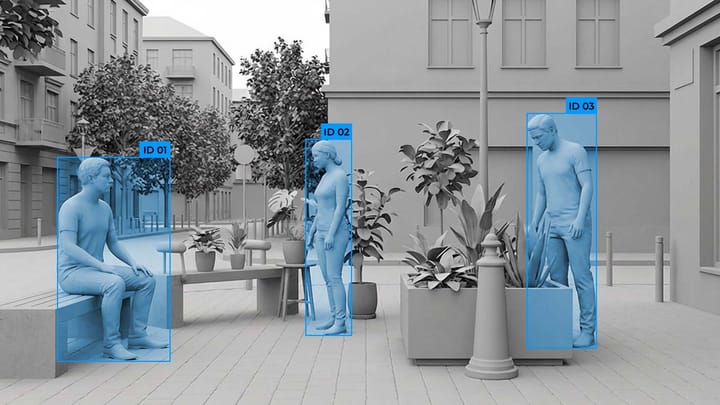Labeling Negative Examples: Teaching Models What Not to Retrieve

In the development of intelligent retrieval systems, much of the focus has traditionally been on teaching models what to look for, using examples that represent relevant, ideal outcomes. Equally important yet often underutilized is showing models what not to retrieve, which relies on negative examples to define the boundaries of relevance.
Labeling negative examples allows machine learning systems to learn distinctions difficult to capture through positive data alone, especially when relevance is nuanced or context-sensitive. This technique doesn't just eliminate incorrect matches. It helps the model understand why specific results, while superficially similar, should be excluded.
Key Takeaways
- Contrasting data points refine AI decision boundaries.
- Strategic sampling prevents model overconfidence.
- Iterative training methods boost discrimination accuracy.
- Complex contrasts accelerate learning efficiency.
Why Opposing Data Matters
When models are trained exclusively on positive examples, they often struggle to distinguish between truly relevant results and those merely similar. Introducing opposing or negative data provides contrast. It teaches the model to recognize subtle differences and avoid false positives. Without this counterbalance, models are more prone to errors, especially in real-world scenarios where ambiguity and noise are common.
Negative examples are particularly valuable in retrieval tasks because they prevent the model from drifting into overly broad or imprecise associations. They serve as guardrails, helping the system stay focused and aligned with the user's intent. This is especially important when working with fine-grained distinctions or domain-specific data, where relevance can't be inferred from similarity alone.
Strategic Training Objectives
Strategic training objectives guide how models are shaped to perform specific tasks with clarity, efficiency, and control. Rather than relying solely on broad goals like "improve accuracy" or "increase relevance", a strategic approach defines concrete learning outcomes that reflect the nuances of the problem space. This involves balancing positive and negative examples, structuring feedback loops, and tailoring datasets to expose the model to edge cases and failure points.
When negative examples are used with intention, they support a wider training strategy that focuses on precision, not just recall. Strategic objectives include reducing false positives, improving ranking quality, or minimizing irrelevant outputs in sensitive use cases. These goals are set and revisited throughout the training process to ensure the model evolves in line with practical expectations. Such an approach requires cross-disciplinary insight, combining technical understanding with an awareness of the user environment and application stakes.
The Evolution of Text Retrieval in AI
The field of text retrieval in AI has evolved significantly, moving from simple keyword matching to more sophisticated, context-aware systems that can understand meaning, intent, and nuance. Early retrieval methods were largely rule-based and relied on exact term overlaps, often leading to rigid, surface-level results. With machine learning and neural networks, retrieval shifted toward vector-based approaches that allow systems to capture semantic similarity rather than just literal matches. This transition enabled models to handle more complex queries, interpret user intent more effectively, and surface content that feels contextually appropriate even if it doesn't share the same vocabulary.
Modern AI retrieval systems now leverage large-scale language models pre-trained on vast corpora and fine-tuned on domain-specific data, allowing them to operate with a far more profound understanding of language. As a result, users can interact with search or recommendation engines more naturally, expecting the system to infer their needs rather than requiring precise phrasing.
Understanding Negative Retrieval Examples
Understanding negative retrieval examples involves recognizing their role in teaching models what to retrieve and what to avoid. These examples represent inputs close enough to the target domain to seem relevant yet ultimately incorrect or unhelpful. By exposing models to such cases, developers can guide them from making overly broad associations or being misled by superficial similarities. This is especially useful in scenarios where relevance is context-dependent or subtle and where minor differences can drastically affect the quality of the output.
In practice, negative retrieval examples can vary in strength and complexity, ranging from obviously irrelevant results to more ambiguous or near-miss cases. The value lies in the contrast: they act as corrective signals that refine the model's internal decision-making. When integrated strategically into training, these examples reduce false positives and improve ranking accuracy, leading to more trustworthy and context-aware systems. They also help reveal blind spots in the data, prompting further refinement of both the dataset and the model architecture.
Defining Contrasting Data Points
Contrasting data points are not simply random or incorrect examples; they are chosen or constructed because they highlight specific boundaries that the model must learn to respect. Often, they are similar in form or content to relevant examples but differ in subtle, meaningful ways that would make them misleading if retrieved.
The process of identifying or generating these examples requires both domain knowledge and strategic intent. Developers must anticipate where the model might go wrong and proactively provide examples that challenge its assumptions. This can involve near-duplicate content that shifts meaning slightly, inputs that resemble the query linguistically but differ in purpose, or examples that exploit known weaknesses in the model's reasoning. When used effectively, contrasting data points elevate the model's performance by making it more cautious, selective, and attuned to nuance.
Critical Features in Modern Implementations
- Context-Aware Embeddings. Modern retrieval systems use embeddings that capture contextual meaning rather than relying on static word representations, allowing the model to interpret queries and documents more flexibly and accurately.
- Dual-Encoder Architectures. These systems encode queries and documents separately into vector space, enabling efficient similarity search and scalable retrieval across large corpora without sacrificing semantic depth.
- Hard Negative Mining. Rather than random negatives, models are trained with challenging non-relevant examples that closely resemble relevant ones, helping refine decision boundaries and reduce false positives.
- Multi-Stage Ranking Pipelines. Initial coarse retrieval is followed by one or more reranking stages using more sophisticated models, improving efficiency and precision in high-stakes applications.
- Feedback-Driven Fine-Tuning. Modern systems incorporate user feedback, clicks, or other engagement signals to iteratively improve performance and adapt to changing usage patterns over time.
- Domain-Specific Adaptation. Pretrained models are fine-tuned on curated, domain-specific data to ensure relevance and accuracy in specialized fields where general models may struggle.
- Retrieval-Augmented Generation (RAG). Some modern retrieval systems are integrated with generation models to provide grounded, context-rich responses, combining the strengths of search and synthesis.
- Efficient Indexing and Search Structures. Advanced vector indexing methods, such as FAISS or ANN search frameworks, ensure real-time retrieval performance even at massive scales.
The Role of Negative Examples in Model Training
While positive examples teach a model to recognize desired patterns or associations, negative examples provide the contrast needed to sharpen those distinctions. Without them, models often learn to overgeneralize, mistaking similarity for relevance or correctness. Negative examples act as corrective signals, pushing the model to reject misleading, ambiguous, or superficially plausible results that don't fit the task.
Negative examples have an especially pronounced impact on retrieval tasks. They reduce false positives, improve ranking, and make the model more resilient to noise or subtle context shifts. Whether chosen randomly, generated synthetically, or mined from hard-to-distinguish near-misses, negative examples expose edge cases that force the model to refine its boundaries. Their presence in training encourages the system to be selective, thoughtful, and cautious in its predictions.
From Positive to Negative Learning
The shift from purely positive to balanced positive and negative learning marks a significant evolution in how machine learning models are trained and understood. Early training approaches often focused exclusively on showing models what should be retrieved or predicted, assuming that reinforcing correct behavior would naturally guide performance. While this approach is practical, it tends to leave gaps in the model's reasoning, mainly when the data space includes ambiguity, overlap, or deceptive patterns.
Incorporating negative learning fills that gap by teaching the model to distinguish, not just to match. It introduces friction into the training process and intentional challenges that help the model navigate subtle boundaries between right and wrong, relevant and irrelevant. This makes the model's behavior more stable and reliable, particularly in open-ended or high-risk settings where false positives can have real consequences. The combination of positive and negative learning leads to deeper generalization and stronger discrimination, ultimately producing systems that are more accurate, robust, and aligned with real-world expectations.
Benefits and Challenges in Training
- Improved Precision and Relevance. Incorporating negative examples helps models avoid false positives by teaching them to distinguish between superficially similar but contextually incorrect outputs, leading to more accurate and relevant results.
- Better Generalization. Training with positive and negative data enables models to perform well across varied and unpredictable inputs, reducing overfitting and enhancing adaptability to new domains or edge cases.
- Deeper Semantic Understanding. Negative examples force models to think beyond surface-level similarity, encouraging them to recognize deeper patterns, subtle context shifts, and meaningful differences that would otherwise go unnoticed.
- Increased Training Complexity. Balancing positive and negative data can introduce new challenges in dataset design, model architecture, and optimization, requiring careful tuning and more sophisticated evaluation strategies.
- Complex Negative Selection Difficulties. Identifying truly informative negative examples, especially those close to positives but still incorrect, can be time-consuming and often demands domain expertise or advanced mining techniques.
Impact on Loss Functions and Training
Traditional loss functions like cross-entropy work well for classification tasks with well-defined labels. Still, in search, the goal often involves ranking, determining whether an item is relevant and how appropriate it is relative to others. This makes comparative or pairwise loss functions particularly useful, such as triplet loss or margin-based ranking loss. These approaches explicitly compare positive and negative pairs, prompting the model to push relevant items closer to the embedding space while pushing irrelevant items further away. The learning process focuses less on identifying isolated positive items and more on learning the relative differences between examples. As a result, loss functions that integrate negative examples add stress and structure to the training, which can lead to more stable convergence and better generalization. However, they also introduce new sensitivities. The negative samples' quality, balance with the positive ones, and complexity of the negative samples all affect how the model learns. Too many easy negative samples and the loss may offer little training signal; too many complex or mislabeled negative samples and the model may become confused or stuck.
Techniques for Variance Reduction
Variance reduction techniques in model training focus on minimizing the unpredictability and instability arising from noisy data, unbalanced examples, or stochastic optimization processes. One common approach is carefully curating and balancing training datasets, ensuring that positive and negative examples fairly and consistently represent the task space.
Another essential strategy is to use ensemble methods, combining multiple models or training runs to smooth out variance and improve robustness. In particular, in search tasks, supervised search for complex negative variants helps reduce variance by focusing the training on the most informative but complex examples rather than random negative variants that can add noise. Training along a curriculum where the model is exposed to examples of increasing complexity can further reduce variance by allowing the model to build stable representations before encountering the most complex cases.
Leveraging Negative Retrieval Examples for Enhanced Model Performance
Using negative search examples plays a key role in improving model performance by providing significant contrast during training, which helps models better distinguish between relevant and irrelevant content. By carefully using these examples, models learn to reject results that may seem superficially similar but do not meet the relevance criteria. This focused training sharpens the model's decision-making capabilities, reducing false positives and improving accuracy in search tasks. Negative examples also encourage the model to develop a more nuanced understanding of context, allowing it to handle ambiguous or edge cases confidently.
In addition, the strategic use of negative search examples supports more effective training strategies, including comparative learning and hard negative analysis. This focus prioritizes complex irrelevant cases that challenge the model's understanding, improving accuracy and helping prevent overtraining by exposing the model to a broader range of scenarios. This ensures that the model remains robust when faced with noisy or complex real-world data, better adapting to the variations it may encounter after deployment.
Implementing the ANCE Approach
Implementing the ANCE (Approximate Nearest Neighbor Estimation by Negative Contrast) approach involves training search models by focusing on complex negative examples efficiently extracted using an approximate nearest neighbor search. This method improves the model's ability to distinguish between truly relevant results and complex irrelevant ones that are close in the embedding space. The main idea of ANCE is to dynamically update the pool of negative examples during training by selecting the negatives that most confuse the model at the moment rather than relying on random or static negatives.
ANCE implementations typically start with a pre-trained encoder that embeds queries and documents into a common vector space. During each training iteration, the system uses approximate nearest neighbor search algorithms, such as FAISS, to efficiently find the closest irrelevant documents to a given query embedding. These resulting complex negatives are then used with the positive pairs in a contrast loss function, which induces the model to bring positive pairs closer together while pushing complex negatives further apart.
Challenges and Limitations in Current Methods
- Difficulty in identifying actual complex negative examples. Finding truly complex negative examples that are similar enough to positives but are still incorrect often requires domain knowledge or sophisticated data analysis techniques.
- Computational cost. Finding complex negative examples, especially with large datasets, requires significant computational resources and can slow down training cycles.
- Risk of overfitting negative examples. Over-focusing on complex negative examples can overfit the model to specific cases, reducing its generalizability to unseen data.
- Label noise and ambiguity. Negative examples can sometimes be mislabeled or borderline relevant, confusing the model and reducing overall performance.
- Difficulty in balancing positive and negative examples. Maintaining the correct ratio and diversity of positive and negative examples is challenging but essential for robust learning.
- Limited interpretation. Models trained with complex negative examples can become less interpretable, as the subtle differences being learned are often difficult to track or explain.
- Scalability issues. As datasets grow, analyzing and integrating negative examples becomes increasingly complex without compromising speed or accuracy.
- Reliance on pre-trained models. Many current methods rely heavily on robust pre-trained encoders, which can limit their applicability in areas where such resources are lacking.
Data Augmentation and Contrastive Learning Strategies
Data augmentation and comparative learning strategies are complementary in improving model robustness and discrimination, especially in search tasks. Data augmentation involves creating modified versions of existing examples using techniques such as synonym substitution, paraphrasing, or noise that help models generalize beyond specific training sets.
Comparative learning builds on this foundation by explicitly teaching the model to distinguish between similar and dissimilar pairs. It uses loss functions that push positive pairs closer together in the embedding space while pushing negative pairs further apart, facilitating a more nuanced understanding of subtle differences. Combined with augmented data, comparative learning encourages the model to be sensitive to broad semantic meaning and the finer distinctions introduced by the augmentation.
Summary
The primary theme focuses on incorporating negative examples and comparative strategies into search training models to improve their accuracy, robustness, and performance in real-world settings. By teaching the model what to extract and exclude, negative examples sharpen the decision-making boundaries and reduce the number of false positives. Data augmentation and comparative training improve the model's ability to distinguish subtle differences and generalize across diverse inputs.
FAQ
Why are negative examples important in training retrieval models?
Negative examples help models learn what not to retrieve, refining their decision boundaries and reducing false positives. They provide a contrast that complements positive examples, improving overall precision.
How do negative examples improve model generalization?
Negative data exposes the model to a wider variety of cases, including challenging non-relevant examples, helping prevent overfitting and enabling the model to perform better on unseen or ambiguous inputs.
What is hard negative mining, and why is it useful?
Hard negative mining selects negative examples that are close to positives but still incorrect, providing strong training signals that push the model to distinguish subtle differences better. This improves retrieval accuracy.
How does contrastive learning work in the context of retrieval?
Contrastive learning trains models to pull relevant items closer together in embedding space while pushing irrelevant items farther apart. This approach sharpens semantic discrimination between positive and negative pairs.
What challenges arise when using negative examples in training?
Challenges include identifying true hard negatives, balancing positive and negative samples, avoiding mislabeled negatives, and managing increased computational costs.
How does data augmentation support retrieval model training?
Data augmentation increases training diversity by creating variations of examples, helping models generalize across different phrasings and contexts. It also supports contrastive learning by introducing meaningful variation.
Why is balancing positive and negative examples crucial?
An imbalance can lead to unstable training or biased models. Too few negatives limit contrast, while too many can confuse the model or increase training time unnecessarily.
What role do loss functions play when integrating negative examples?
Loss functions like triplet or margin-based ranking loss explicitly optimize the model to distinguish positives from negatives, guiding the learning process through relative comparisons.
How does negative example integration affect computational requirements?
Including negatives, especially hard negatives, often requires additional mining steps and more complex training, increasing computational load and training time.
What benefits do negative examples bring to real-world retrieval systems?
They improve result relevance, reduce retrieval of misleading or ambiguous content, and make systems more reliable and aligned with user intent in practical scenarios.



Comments ()